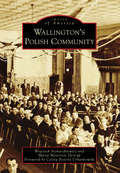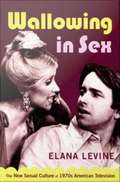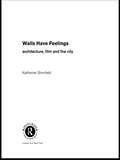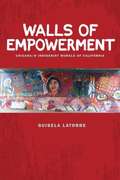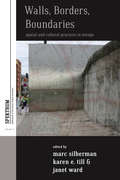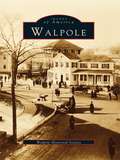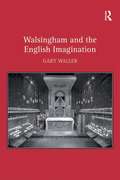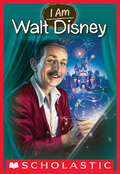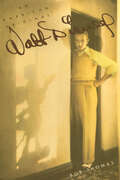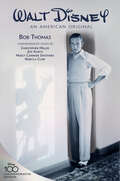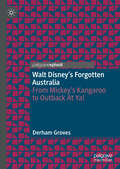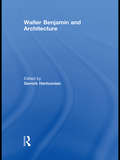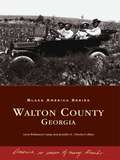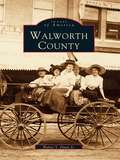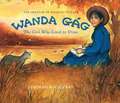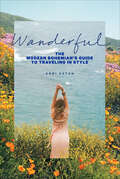- Table View
- List View
Wallington's Polish Community
by Marta Mestrovic Deyrup Bozena Celina Urbankowski Wojciech SiemaszkiewiczThe years after World War I heralded a large influx of Polish immigrants fleeing war-torn homelands in search of a better life. Drawn by the opportunity to work in the textile and manufacturing mills, Polish immigrants moved to Wallington, New Jersey, a newly incorporated borough in Bergen County. The Polish community of Wallington established themselves as local store owners and businessmen. They constructed churches and social club buildings; established restaurants, pubs, and grocery stores; and participated in the social life of their community. By the 1920s, Polish Americans began to dominate local politics; in 1929, the first Polish American mayor, Leo Strzelecki, was elected. Polish Americans became the majority in Wallington between 1935 and 1945, representing about 70 percent of the population. In 2012, Polish Americans comprise over 50 percent of Wallington's population. Through vintage photographs that capture the spiritual life of these people and the struggles they overcame, Wallington's Polish Community honors the Polish immigrants of the past while educating new generations.
Wallops Island
by Bo Bennett Nan Devincent-HayesLocated in Accomack County on Virginia's Eastern Shore, Wallops Island was once a primitive swath of land, uncivilized but by the wild ponies and mosquitoes that made its scrub-covered shores their home. But as the centuries passed, the wildness of the island was radically altered by the influx of colonists, then vacationers, and, eventually, some of the brightest scientific minds in the country. The history of Wallops Island has been one of transition. In the colonial period, John Wallop, an industrious man and self-made millionaire, was granted much of the island's acreage by the English Crown for providing assistance to new colonists trying to reach Virginia. In 1889, Wallops Island was bought and converted into a vacation destination for a handful of wealthy families from Pennsylvania, who, in turn, sold the island to the federal government in the 1940s. Once in the hands of NASA the island was transformed into a center for the high-tech development of rockets, missiles, and the means for space travel. From weather balloons and Tiamat missiles to aerodynamics and hurricane research, the Wallops Island Flight Facility and its predecessors have been instrumental in the evolution and success of the American space program.
Wallowing in Sex: The New Sexual Culture of 1970s American Television
by Lynn Spigel Elana LevinePassengers disco dancing in The Love Boat's Acapulco Lounge. A young girl walking by a marquee advertising Deep Throat in the made-for-TV movie Dawn: Portrait of a Teenage Runaway. A frustrated housewife borrowing Orgasm and You from her local library in Mary Hartman, Mary Hartman. Commercial television of the 1970s was awash with references to sex. In the wake of the sexual revolution and the women's liberation and gay rights movements, significant changes were rippling through American culture. In representing--or not representing--those changes, broadcast television provided a crucial forum through which Americans alternately accepted and contested momentous shifts in sexual mores, identities, and practices.Wallowing in Sex is a lively analysis of the key role of commercial television in the new sexual culture of the 1970s. Elana Levine explores sex-themed made-for-TV movies; female sex symbols such as the stars of Charlie's Angels and Wonder Woman; the innuendo-driven humor of variety shows (The Sonny and Cher Comedy Hour, Laugh-In), sitcoms (M*A*S*H, Three's Company), and game shows (Match Game); and the proliferation of rape plots in daytime soap operas. She also uncovers those sexual topics that were barred from the airwaves. Along with program content, Levine examines the economic motivations of the television industry, the television production process, regulation by the government and the tv industry, and audience responses. She demonstrates that the new sexual culture of 1970s television was a product of negotiation between producers, executives, advertisers, censors, audiences, performers, activists, and many others. Ultimately, 1970s television legitimized some of the sexual revolution's most significant gains while minimizing its more radical impulses.
Walls Have Feelings: Architecture, Film and the City
by Katherine ShonfieldFor the first time, this book brings the insights, methodologies and visions of film to the practice of architecture.Walls Have Feelings poses unanswered questions from our immediate past, crucial for the future of the city: what was the cultural mindset leading to the triumph of Brutalism? What is the urban and domestic impact of large scale office building? Are there alternatives to the planners' city of object? and, Why does your flat leak?This book uniquely brings to bear questions of urgent cultural relevance on critical design decisions. As such, it is of as much importance to architects, planners and students of design, as to students of cultural history, geography and all enthusiasts of cities and of film.
Walls Within Walls
by Adam Stower Maureen SherryAfter their father, a video-game inventor, strikes it rich, the Smithfork kids find they hate their new life. They move from their cozy Brooklyn neighborhood to a swanky apartment on Manhattan's Fifth Avenue. They have no friends, a nanny who takes the place of their parents, and a school year looming ahead that promises to be miserable.And then, one day, Brid, CJ, and Patrick discover an astonishing secret about their apartment: The original owner, the deceased multimillionaire Mr. Post, long ago turned the apartment itself into a giant puzzle containing a mysterious book and hidden panels--a puzzle that, with some luck, courage, and brainpower, will lead to discovering the Post family fortune. Unraveling the mystery causes them to race through today's New York City--and to uncover some long-hidden secrets of the past.Maureen Sherry's page-turning debut novel is filled with adventure, intrigue, and heart.
Walls of Empowerment
by Guisela LatorreExploring three major hubs of muralist activity in California, where indigenist imagery is prevalent, Walls of Empowerment celebrates an aesthetic that seeks to firmly establish Chicana/o sociopolitical identity in U. S. territory. Providing readers with a history and genealogy of key muralists' productions, Guisela Latorre also showcases new material and original research on works and artists never before examined in print. An art form often associated with male creative endeavors, muralism in fact reflects significant contributions by Chicana artists. Encompassing these and other aspects of contemporary dialogues, including the often tense relationship between graffiti and muralism, Walls of Empowerment is a comprehensive study that, unlike many previous endeavors, does not privilege non-public Latina/o art. In addition, Latorre introduces readers to the role of new media, including performance, sculpture, and digital technology, in shaping the muralist's "canvas. " Drawing on nearly a decade of fieldwork, this timely endeavor highlights the ways in which California's Mexican American communities have used images of indigenous peoples to raise awareness of the region's original citizens. Latorre also casts murals as a radical force for decolonization and liberation, and she provides a stirring description of the decades, particularly the late 1960s through 1980s, that saw California's rise as the epicenter of mural production. Blending the perspectives of art history and sociology with firsthand accounts drawn from artists' interviews, Walls of Empowerment represents a crucial turning point in the study of these iconographic artifacts.
Walls, Borders, Boundaries
by Janet Ward Karen E. Till Marc SilbermanHow is it that walls, borders, boundaries--and their material and symbolic architectures of division and exclusion--engender their very opposite? This edited volume explores the crossings, permeations, and constructions of cultural and political borders between peoples and territories, examining how walls, borders, and boundaries signify both interdependence and contact within sites of conflict and separation. Topics addressed range from the geopolitics of Europe's historical and contemporary city walls to conceptual reflections on the intersection of human rights and separating walls, the memory politics generated in historically disputed border areas, theatrical explorations of border crossings, and the mapping of boundaries within migrant communities.
Walls: The Long History of Human Barriers and Why We Build Them (Orca Timeline #5)
by Gregor CraigieKey Selling Points An in-depth look at walls around the world throughout human history, up to the present day and into the future. From the US-Mexico border wall to the Israeli West Bank barrier and the Hungarian border wall, controversial and divisive walls are being built around the world today. This book will challenge young readers to think critically about why humans have built walls throughout history, who is affected, and the positive and negative consequences of building walls, for people and places. Deals with themes of war and peace (ancient and modern), the climate crisis, human migration, racism, nationalism, protectionism, ecosystems and food insecurity. The author is an award-winning journalist with CBC Radio in Victoria, British Columbia, and the author of books for both children and adults.
Walnut Ridge and Hoxie (Images of America)
by Jon Walter James WhitlowWhen word came to "Old" Walnut Ridge that the railroad was coming, Col. Willis Miles Ponder moved the entire settlement a few miles, cleared a site for a depot, and platted the new town in 1874. Not long after, Hoxie was formed when Henry and Mary Boas offered a right-of-way for another railroad through their land just south of Walnut Ridge. Born by the railroads, the towns have been joined at the hip ever since. By 1889, there was a mule-drawn streetcar connecting the two towns, replaced by an electric streetcar in 1904. Hit hard by the Depression, the towns were saved in part when Walnut Ridge was selected as the home of a World War II Army Air Field, resulting in an influx of 4,000 people. This facility is now used as a city airport, industrial park, and home of Williams Baptist College. Images of America: Walnut Ridge and Hoxie illustrates the boom times and the struggles of these towns through their first 100 years.
Walpole
by Walpole Historical SocietyWalpole, Massachusetts, located about 20 miles southwest of Boston, has undergone an interestingtransformation from a rural community dotted with farms, to an industrial landscape dominated by factories and plants, to a modern bedroom suburb of Boston. This volume of over two hundred photographs, many published for the first time, presents a well-rounded view of Walpole from the late eighteenth century into the mid-twentieth century. Readers will see a Walpole that has mostly disappeared and will have the opportunity to stroll down Main Street before it and other roads were paved, to observe and peek into forgotten, antiquated homes and government buildings, and to walk in the shadows of the great mills. Two of the nationally known industries that this book touches upon are Kendall's Curity, which produced diapers, band aids, and other medical supplies; and Bird and Son, which manufactured roofing shingles, siding products, floor coverings, and cardboard boxes.
Walsingham and the English Imagination
by Gary WallerDrawing on history, art history, literary criticism and theory, gender studies, theology and psychoanalysis, this interdisciplinary study analyzes the cultural significance of the Shrine of our Lady of Walsingham, medieval England's most significant pilgrimage site devoted to the Virgin Mary, which was revived in the twentieth century, and in 2006 voted Britain's favorite religious site. Covering Walsingham's origins, destruction, and transformations from the Middle Ages to the present, Gary Waller pursues his investigation not through a standard history but by analyzing the "invented traditions" and varied re-creations of Walsingham by the "English imagination"- poems, fiction, songs, ballads, musical compositions and folk legends, solemn devotional writings and hostile satire which Walsingham has inspired, by Protestants, Catholics, and religious skeptics alike. They include, in early modern England, Erasmus, Ralegh, Sidney, and Shakespeare; then, during Walsingham's long "protestantization" from the sixteenth through nineteenth centuries, ballad revivals, archeological investigations, and writings by Agnes Strickland, Edmund Waterton, and Hopkins; and in the modern period, writers like Eliot, Charles Williams, Robert Lowell, and A.N. Wilson. The concluding chapter uses contemporary feminist theology to view Walsingham not just as a symbol of nostalgia but a place inviting spiritual change through its potential sexual and gender transformation.
Walt Disney (I Am #11)
by Ms. Grace NorwichI am the creator of Mickey Mouse. I am Walt Disney.As a child, I had a wild imagination and a great curiosity. As I grew up, I used those qualities to become a cartoonist. Eventually, I turned these drawings into films and began my own animation business. One of my characters, Mickey Mouse, became so popular that movie theaters sold out and I won an Academy Award. After pursuing a career as a film producer, director, screenwriter, voice actor, entrepreneur and entertainer, I added developer to my resume when I created Disneyland amusement park. I became tremendously successful and beloved by children of all ages because of my belief that even the impossible is possible. I am Walt Disney.To this day, Walt Disney's characters remain some of the most recognizable images in the world. With books, TV shows, films, and amusement parks devoted to his creations, the Walt Disney name lives on. Learn all about this remarkable man's fascinating life in Scholastic's biography series, I AM.
Walt Disney's The Jungle Book: Making a Masterpiece
by Andreas Deja The Walt Disney Family MuseumWritten by Disney Legend Andreas Deja and lavishly illustrated, Walt Disney&’s The Jungle Book gathers original animation celluloids, animation drawings, and concept art—many of which have never been shown to the public—from the popular exhibition at The Walt Disney Family Museum in San Francisco. Considered one of the finest and most influential Disney movie, The Jungle Book (1967) is the last animated film that Walt Disney personally produced with his signature vision and footprint. This curated collection explores the nuanced complexities and challenges that were overcome throughout the film&’s development and production, such as the unique characters and their voice-actor counterparts, the application of cutting-edge animation techniques of the time, and the timeless, original songs by the Sherman Brothers and Terry Gilkyson. Dive into the impact of Walt&’s passing on the Disney Studios and the everlasting legacy of the film throughout the world. NEVER-BEFORE-SEEN ANIMATION: Includes original animation celluloids, animation drawings, and concept art from lead animators, most of which have never been seen by the public HEARTWARMING BEHIND-THE SCENES-STORIES: Learn how lead animators Ollie Johnston and Frank Thomas&’s real-life friendship became the inspiration for the on-screen chemistry between the characters Mowgli and Baloo EXPLORE THE HISTORY OF A BELOVED CLASSIC: Walt Disney&’s The Jungle Book narrates the complexities faced during the film&’s development and production as well as the use of new animation techniques at the time WRITTEN BY A DISNEY LEGEND: Andreas Deja, named a Disney Legend in 2015, has designed and overseen the animation of countless animated Disney films including The Little Mermaid, Aladdin, Beauty and the Beast, Hercules, and Lilo and Stitch PERFECT GIFT: Walt Disney&’s The Jungle Book is a must-have collectible gift for every Disney enthusiast and film historian in your life
Walt Disney: An American Original, Commemorative Edition (Disney Editions Deluxe)
by Bob ThomasThis is the Commemorative Edition of one of the most trusted and respected nonfiction books about Walt Disney ever written!Includes 4 commemorative essays; a photo insert with more than 60 behind-the-scenes images; and an endnotes section with insightful passages from 15 Disney historians and authors to provide further context for modern audiences.Walt Disney is an American hero. From Mickey Mouse to Disneyland, he changed the face of American culture. His is a success story like no other: a man who developed animated film into an art form and made a massive contribution to the folklore of the world.After years of research, respected Hollywood biographer Bob Thomas produced this definitive biography of the person behind the legend of Disney: the unschooled cartoonist from Kansas City, Missouri, who—though his initial studio went bankrupt during his first movie venture—developed into a creative spirit who produced unmatched works of entertainment that have influenced generations. Inside the Commemorative Edition paperback:• Special essays by Christopher Miller, Jeff Kurtti, Marcy Carriker Smothers, and Rebecca Cline and an updated index from the 2023 edition• Preface by Bob Thomas from the 1994 edition• Foreground, 28 chapters, and sources by Bob Thomas from the 1976 edition• Endnotes excerpting 15 books that have furthered Bob&’s research from the 2023 edition• 32-page photo insert with more than 60 behind-the-scenes images from the 2023 editionSearching for information about Walt Disney? Explore more books from Disney Editions:The Official Walt Disney Quote BookPeople Behind the Disney Parks: Stories of Those Honored with a Window on Main Street, U.S.A.Maps of the Disney Parks: Charting 60 Years from California to ShanghaiWalt's Disneyland: A Walk in the Park with Walt DisneyThe Story of Disney: 100 Years of Wonder
Walt Disney: an American Original, Commemorative Edition (Disney Editions Deluxe)
by Bob ThomasThis is the Commemorative Edition of one of the most trusted and respected nonfiction books about Walt Disney ever written!Includes 4 commemorative essays; a photo insert with more than 60 behind-the-scenes images; and an endnotes section with insightful passages from 15 Disney historians and authors to provide further context for modern audiences.Walt Disney is an American hero. From Mickey Mouse to Disneyland, he changed the face of American culture. His is a success story like no other: a man who developed animated film into an art form and made a massive contribution to the folklore of the world.After years of research, respected Hollywood biographer Bob Thomas produced this definitive biography of the person behind the legend of Disney: the unschooled cartoonist from Kansas City, Missouri, who—though his initial studio went bankrupt during his first movie venture—developed into a creative spirit who produced unmatched works of entertainment that have influenced generations. Inside the Commemorative Edition paperback:• Special essays by Christopher Miller, Jeff Kurtti, Marcy Carriker Smothers, and Rebecca Cline and an updated index from the 2023 edition• Preface by Bob Thomas from the 1994 edition• Foreground, 28 chapters, and sources by Bob Thomas from the 1976 edition• Endnotes excerpting 15 books that have furthered Bob&’s research from the 2023 edition• 32-page photo insert with more than 60 behind-the-scenes images from the 2023 editionSearching for information about Walt Disney? Explore more books from Disney Editions:The Official Walt Disney Quote BookPeople Behind the Disney Parks: Stories of Those Honored with a Window on Main Street, U.S.A.Maps of the Disney Parks: Charting 60 Years from California to ShanghaiWalt's Disneyland: A Walk in the Park with Walt DisneyThe Story of Disney: 100 Years of Wonder
Walt Disney’s Forgotten Australia: From Mickey’s Kangaroo to Outback At Ya!
by Derham GrovesThis book delves into the fascinating and often overlooked history of Walt Disney's influence in Australia, tracing the cultural impact of iconic characters like Mickey Mouse and Donald Duck from their inception in 1928 to the end of the Vietnam War. The author uncovers how Disney became intertwined with Australian popular culture, reflecting significant technological advancements and global events such as the introduction of radio and television, the Cold War, and more. The chapters investigate a range of topics, including Disney's dual role as a symbol of American culture and a mirror to Australian society. Readers will discover how Disney characters were perceived in Australia during pivotal moments in history, offering both entertainment and commentary on contemporary issues. The author provides expert analysis of Disney's complex legacy, examining both its positive contributions to Australian media and controversial aspects. This book invites readers to consider critical questions about cultural exchange and influence, making it a must-read for media and cultural history scholars looking to understand the intricate relationship between Disney and Australian culture, and indeed how global media can shape national identity and societal values. Whether you are a researcher in cultural studies or simply an enthusiast interested in Disney's global impact, this book provides a comprehensive look at an essential chapter in Australia's cultural narrative.
Walt before Mickey: Disney's Early Years, 1919-1928
by Timothy S. SusaninFor ten years before the creation of Mickey Mouse, Walt Disney struggled with, failed at, and eventually mastered the art and business of animation. Most biographies of his career begin in 1928, when Steamboat Willie was released. That first Disney Studio cartoon with synchronized sound made its main character—Mickey Mouse—an icon for generations. But Steamboat Willie was neither Disney's first cartoon nor Mickey Mouse's first appearance. Prior to this groundbreaking achievement, Walt Disney worked in a variety of venues and studios, refining what would become known as the Disney style. In Walt before Mickey: Disney's Early Years, 1919–1928, Timothy Susanin creates a portrait of the artist from age seventeen to the cusp of his international renown. After serving in the Red Cross in France after World War I, Walt Disney worked for advertising and commercial art in Kansas City. Walt used these experiences to create four studios—Kaycee Studios, Laugh-O-gram Films, Disney Brothers Studio, and Walt Disney Studio. Using company documents, private correspondence between Walt and his brother Roy, contemporary newspaper accounts, and new interviews with Disney's associates, Susanin traces Disney's path. The author shows Disney to be a complicated, resourceful man, especially during his early career. Walt before Mickey, a critical biography of a man at a crucial juncture, provides the “missing decade” that started Walt Disney's career and gave him the skills to become a name known worldwide.
Walt's Imagination: The Life of Walt Disney (Big Words #10)
by Doreen RappaportWalt Disney's name is synonymous with family entertainment. Mickey Mouse, Snow White and the Seven Dwarfs, Bambi, Disneyland, and numerous other creations have inspired generations of children the world over. From his childhood in rural Missouri to his legendary stature as a film and television icon, Walt governed his life with imagination, ingenuity, and scrupulous attention to detail. Faced with both public failures and massive success, he revolutionized the art form of animation, always seeking innovative solutions, cutting edge technology, and new ways of storytelling. Devoted to perfection, Walt was not always easy to work with, but no one can deny his profound talent and impact. Charting Walt's progression from farm boy to actor to artist, animator, director, and entertainment celebrity, Walt's own words are presented and contextualized within Doreen Rappaport's signature compelling prose. Illustrated with vivid authenticity by animator/painter John Pomeroy, this stunning entry in the award-winning Big Words series reveals a man of deep and varied passions with a constantly evolving vision, and a storyteller above all.
Walter Benjamin and Architecture
by Gevork HartoonianThe essays compiled in this book explore aspects of Walter Benjamin’s discourse that have contributed to the formation of contemporary architectural theories. Issues such as technology and history have been considered central to the very modernity of architecture, but Benjamin’s reflection on these subjects has elevated the discussion to a critical level. The contributors in this book consider Walter Benjamin's ideas in the context of digitalization of architecture where it is the very technique itself that determines the processes of design and the final form. This book was published as a special issue of Architectural Theory Review.
Walter Benjamin's Concept of the Image (Routledge Studies in Twentieth-Century Philosophy)
by Alison RossIn this book, Alison Ross engages in a detailed study of Walter Benjamin’s concept of the image, exploring the significant shifts in Benjamin’s approach to the topic over the course of his career. Using Kant’s treatment of the topic of sensuous form in his aesthetics as a comparative reference, Ross argues that Benjamin’s thinking on the image undergoes a major shift between his 1924 essay on ‘Goethe’s Elective Affinities,’ and his work on The Arcades Project from 1927 up until his death in 1940. The two periods of Benjamin’s writing share a conception of the image as a potent sensuous force able to provide a frame of existential meaning. In the earlier period this function attracts Benjamin’s critical attention, whereas in the later he mobilises it for revolutionary outcomes. The book gives a critical treatment of the shifting assumptions in Benjamin’s writing about the image that warrant this altered view. It draws on hermeneutic studies of meaning, scholarship in the history of religions and key texts from the modern history of aesthetics to track the reversals and contradictions in the meaning functions that Benjamin attaches to the image in the different periods of his thinking. Above all, it shows the relevance of a critical consideration of Benjamin’s writing on the image for scholarship in visual culture, critical theory, aesthetics and philosophy more broadly.
Walter Gropius in Britain: Emigration and Collaborations (Routledge Research in Architecture)
by Alborz DianatAs the first monograph dedicated to Walter Gropius’s activity in Britain, this book provides a comprehensive account of the Bauhaus founder’s contributions to architecture and design while living in London between 1934 and 1937. Drawing on earlier and later decades, this reveals the close contact between British, German and American design circles, with Gropius bridging parallel developments.In its approach, this book concentrates on the individuals working to aid Gropius in Britain and spurring the architect’s enduring dominance in English‑language histories. This includes his architectural partner Maxwell Fry, his translator P. Morton Shand, his employer Jack Pritchard and many other prominent figures such as Frank Pick, Herbert Read, Elizabeth Denby and Henry Morris. The vital role of Gropius’s wife Ise is also highlighted, particularly as her English‑language capabilities far exceeded his. By uncovering this wider network, the collaborative nature of his success is demonstrated. Such an approach reveals Gropius’s contributions beyond buildings to various debates in the period. These spanned subjects including standardisation, prefabrication, democratisation, the planning of high rises, the influence of commercialism, and the reform of architectural education and practice. Beyond design discourse, the broader impact of nationalism is considered, with the support Gropius received contrasted against the attacks Jewish émigrés endured.This book will appeal to those interested in the Bauhaus, interwar Britain, architectural media and emigration studies. By applying revisionist approaches and highlighting the importance of discourse beyond built forms, this book advances our knowledge of the period. The transnational focus holds significance for architectural developments in Germany, Britain and America, following Gropius’s trajectory. While concentrated primarily on the interwar period, the postwar impact of exchanges is revealed, leading up until Gropius’s death in 1969.
Walton County, Georgia (Black America Series)
by Jennifer E. Cheeks-Collins Lynn Robinson CampSituated between Atlanta and Athens, Walton County has always been a stronghold of the cotton industry. While some of the largest cotton crops in the world have emerged from its fertile fields, a strong community and storied history have come to define the county. Recognized as the site of America's last mass-lynching at Moore's Ford in 1946, Walton County has been a focal point of national attention, sparking changes that have contributed to the nation's Civil Rights movement.But it is not only this tragedy that has given Walton County a sense of identity. Indeed, other lesser-known events and accomplishments have contributed to its history. Whether boasting Atlanta's first black millionaire, a member of the U.S. Olympic basketball team, or a high school state football championship, Walton County has thrived both in and out of the national spotlight.
Walworth County (Images of America)
by Walter S. Dunn Jr.From 1870 to 1950, Walworth County, Wisconsin, experienced a period of dramatic social change. This fascinating collection of photographs provides avisual journey through time, depicting major changes in transportation and its effects on the beautiful shores of Lake Geneva. Developments in the railroad provided a huge catalyst for change before the turn of the century. Farmers were able to ship milk to Chicago and the annual influx of summer residents from the Chicago area quickly grew with the easy access to Lake Geneva's wealthy south shore. The advent of the automobile sparked a second radical change in the face of the county, opening up a vast radius of the Midwest to families who had once been restricted by the horse-drawn wagon. The oneroom school became a thing of the past, and the lakes became popular destinations for weekend visitors set to enjoy the leisurely pursuits of boating and fishing.
Wanda Gág: The Girl Who Lived to Draw
by Deborah Kogan RayWanda Gág (pronounced Gog) is well known as the author and illustrator of "Millions of Cats," one of the best-loved children's books ever published. But not many people know how interesting and inspiring her life was. Following in the footsteps of her beloved artist father, Wanda led an idyllic childhood, drawing and listening to old-world fairy tales. But when her father died, it was teenage Wanda who worked hard to keep her seven younger siblings fed, clothed, and laughing. She never lost sight of her love of art, however, and her tremendous willpower won her a coveted scholarship to the Art Students League in New York City and then led to a gallery show of her artwork where an editor of children's books got an idea for a book. The rest, as they say, is history!
Wanderful: The Modern Bohemian's Guide to Traveling in Style
by Andi EatonA girl with a love for off-the-beaten-path destinations, fashion maven Andi Eaton found herself putting aside the Lonely Planet and Condé Nast Traveler guides and, instead, looking to bohemians and artists for travel and style inspiration: What do the flower children wear on their excursions? Where are the creatives’ favorite vintage shops? And where do the musicians go late-night dancing after the last encore? The dreamer in her wanted more than what a standard travel guide could offer, so she decided to create her own. Wanderful is a stylish lookbook and travelogue for the adventurous and nomadic at heart. Follow in Andi’s footsteps as she travels the United States to discover some of its most effortlessly chic destinations—and the fashionable free spirits and wanderers who live there. Nine intimate and exciting road trip routes explore cities, forests, and in between, and will make you feel like you’re traipsing the country with your best, and best-dressed, girlfriends by your side. Every route features a peek into the closets of area tastemakers, and many routes lead to favorite trendy destinations, including Joshua Tree, New Orleans, Marfa, and Santa Fe. Throughout, there are photos, stories, and recommendations for where to shop, dine, and find music and fun, just like a local.
